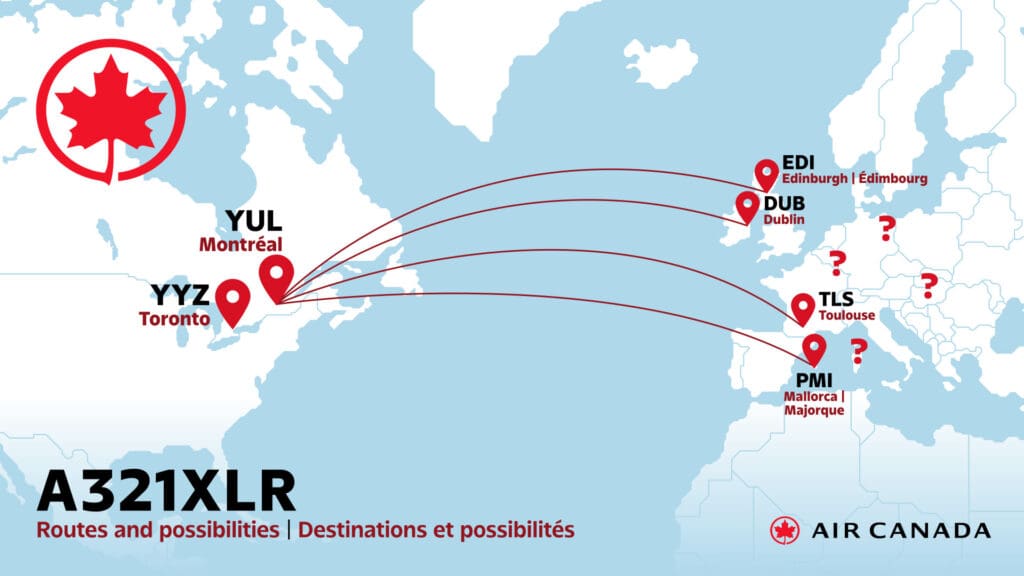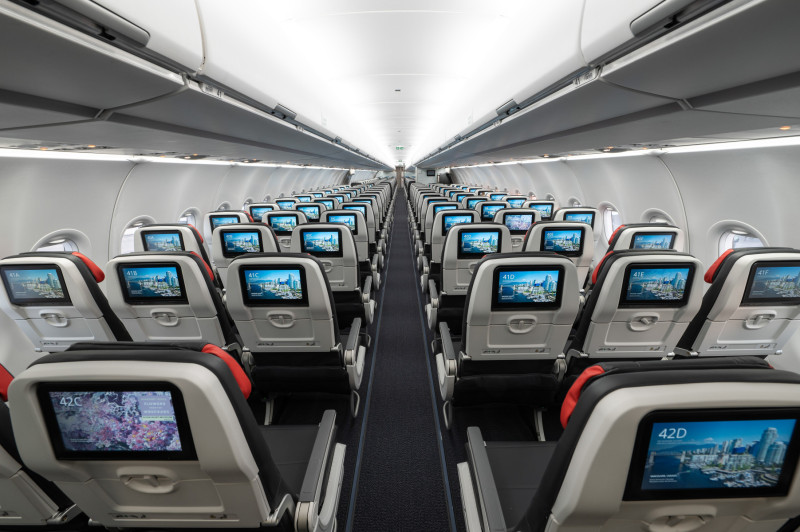Air Canada’s A321XLR: The Game-Changer for Medium-Haul International Travel

Air Canada is preparing to make a big splash in its fleet with the Airbus A321XLR, a plane designed to stretch the limits of narrow-body aircraft. For travellers, this means smarter routes, new destinations, and a more efficient travel experience. Here’s everything you need to know about what’s coming.
Delivery Delays, But Exciting Times Ahead

The first A321XLR was initially expected to join Air Canada’s fleet in late 2025, but delivery has now been pushed to early 2026. The airline has a total of 26 aircraft on order—six purchased directly from Airbus and 20 leased from Air Lease Corporation and AerCap. Additionally, Air Canada holds purchase rights for 14 more, potentially stretching deliveries through 2030.
While delays are never ideal, they give the airline time to strategically plan how these versatile aircraft will fit into its international network.
Why the A321XLR Is a Big Deal

The A321XLR isn’t just another plane in the fleet—it’s a narrow-body jet with extended range and improved fuel efficiency. That makes it perfect for routes that were previously only feasible with wide-body aircraft. For Air Canada, this aircraft brings several key benefits:
- Expanded International Reach: Fly farther than ever with a narrowbody jet, opening doors to underserved or secondary markets.
- Optimized Capacity: Right-sized aircraft for medium-haul routes, improving load factors and efficiency.
- Sustainability: Advanced fuel efficiency aligns with Air Canada’s environmental goals while keeping operating costs manageable.
First Routes to Watch

Air Canada is set to deploy the A321XLR on both new and existing routes. The first confirmed route? Montréal to Palma de Mallorca, Spain, launching in summer 2026. Other destinations beginning next summer include Toulouse, Dublin, and Edinburgh—currently served by larger wide-body aircraft.
By matching aircraft size to demand, Air Canada can operate more cost-effectively while still offering passengers premium service and comfort on medium-haul flights.
Operational Advantages

Beyond range and efficiency, the A321XLR offers operational flexibility. Its ability to fly longer non-stop routes allows Air Canada to explore new markets that were previously out of reach for narrowbody jets. This opens doors for more non-stop travel options from secondary cities or routes that didn’t have enough demand to justify a larger aircraft.
What It Means for Travellers

For passengers, the A321XLR promises a better travel experience:
- More direct routes without connections
- Better-aligned seat capacity with demand, potentially improving fare competitiveness
- Continued commitment to sustainability and efficiency, which may influence future ticket pricing
Looking Ahead

Air Canada’s A321XLR fleet is more than just a new plane—it represents a strategic shift in how the airline approaches medium-haul international travel. By introducing these advanced narrow-body jets, Air Canada is positioning itself to expand its global network, improve operational efficiency, and offer travellers more options than ever before.
Follow me on Instagram and Tiktok for travel tips hacks that’ll make your adventures unforgettable!
@thecanadianjetsetter on INSTAGRAM →
@thecanadianjetsetter on TIKTOK →
follow me ON Instagram →
FOLLOW me on tiktok →
Comments will load here
Be the first to comment